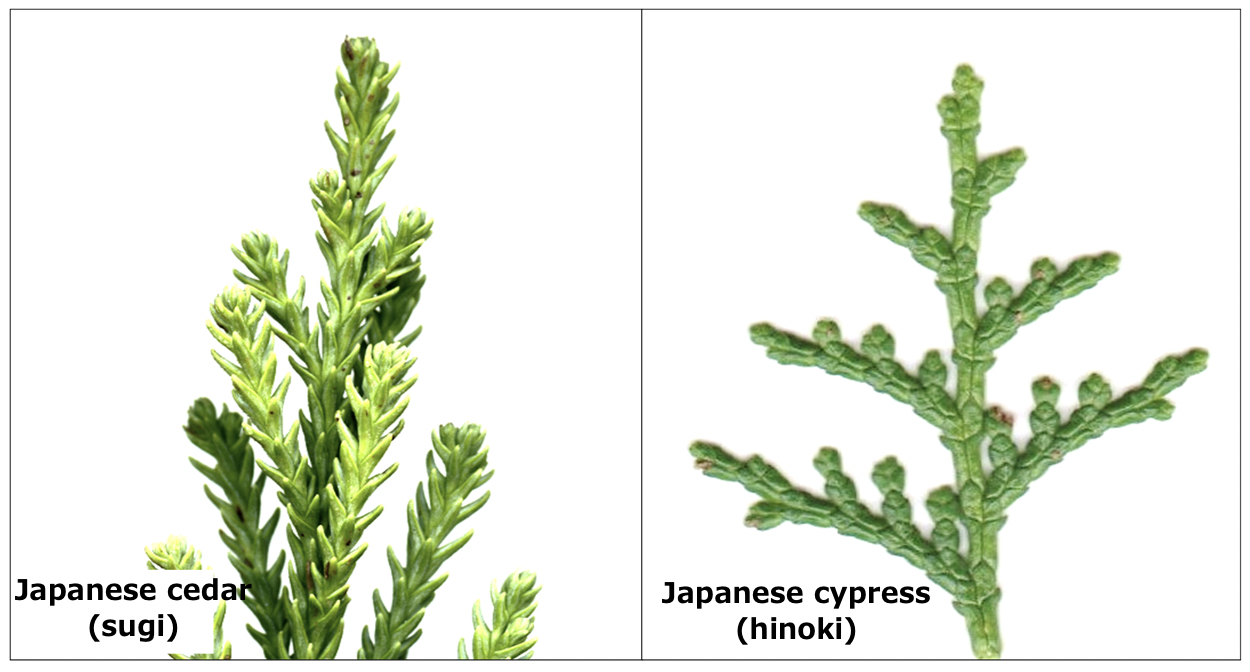Pick Up
464. Revealing Various Physiological Traits of Useful Trees Using a Large Database

The Japanese cedar (Cryptomeria japonica) and Japanese cypress (Chamaecyparis obtusa) are important timber species, accounting for the majority of planted forests in Japan. Although cedar is considered to be endemic to Japan, it is also planted in subtropical regions such as India and Taiwan, where it is used as a local timber resource. Understanding the physiological and ecological traits of these species, such as photosynthesis and drought tolerance, is essential information for predicting growth and elucidating responses to climate change.
Empirically, cedar grows faster in wet environments, while cypress can tolerate dry environments. These characteristics are due to differences in physiological traits such as photosynthetic capacity, but the results of individual studies are limited in the number of data available and biased towards the seedling stage, limiting the ability to comprehensively elucidate physiological traits from seedling to adult trees.
In a study published in the international journal PLOS ONE, we compared various physiological and ecological traits of Japanese cedar and Japanese cypress using a large database of literature published over the past 70 years.
The results showed that cedar's fast growth was due to its leaf arrangement that efficiently receives high light and its low wood density. On the other hand, Japanese cedar has a high transpiration capacity and high water consumption, and Japanese cypress has a high drought tolerance of leaves and wood, which is consistent with empirical findings. Surprisingly, there was no difference in the photosynthetic capacity per leaf area of the two species, and although leaf drought tolerance increased with growth, leaf nutrient concentration and leaf photosynthetic capacity decreased, and growth was also restricted. Secondly, from a global perspective, the drought tolerance capacity of both species was moderate among the Cupressaceae family to which Japanese cedar and Japanese cypress belong. This may have something to do with the fact that Japan's climate has historically been relatively wet. In the future, when extreme droughts become more frequent due to decreased precipitation caused by climate change, and when strong drought occurs, which has never been experienced before, there is a high risk that cedar and cypress will decline in growth and even die. The quantitative physiological capacities of Japanese cedar and Japanese cypress obtained in this study will be useful for the precise prediction of climate change effects on planted forests and for studying how to manage forests more resiliently to climate change.
There are trees in the tropics that have a variety of excellent characteristics, both as timber and as trees. However, a database of quantitative physiological traits of tropical trees has not been sufficiently developed. As climate change accelerates, there is an urgent need to establish sustainable tropical forest management that utilizes diverse forest genetic resources and is highly adaptive to the environment. In the JIRCAS project Evaluation of genetic resources for strengthening productivity and adaptability of tropical forests (Adaptive forestry), we are working to develop data management on the characterization of tropical forest genetic resources to enhance productivity and environmental adaptability.
Note: Literature on Japanese cedar and Japanese cypress from all over Japan, Taiwan, and the Korean Peninsula has been comprehensively collected since the 1950s, and a database of 177 characteristics such as photosynthesis, wood density, and leaf traits has been compiled and made available to the public (Osone et al. 2020). The database contains a total of 24,700 data points for both species, which is the largest number of data for a single tree species in the world. For more details, please refer to the following papers and explanatory articles.
Osone Y, Hashimoto S, Kenzo T, Araki MG, Inoue Y, Shichi K, et al. Plant trait database for Cryptomeria japonica and Chamaecyparis obtusa (SugiHinoki DB): Their physiology, morphology, anatomy and biochemistry Ecol. Res. 2020: 35; 274–275.
https://www.a.u-tokyo.ac.jp/topics/topics_20200319-1.html
Reference
Osone Yoko, Hashimoto Shoji, Tanaka Kenzo (2021) Verification of our empirical understanding of the physiology and ecology of two contrasting plantation species using a trait database. PLOS ONE, 16(1), e0254599,
DOI:10.1371/journal.pone.0254599, URL:
Forestry and Forest Products Research Institute 「大規模データベースを使ってスギとヒノキの様々な生理的能力を明らかにした」2022.1.19. https://www.ffpri.affrc.go.jp/research/saizensen/2022/20220119-03.html
Contributor: TANAKA Kenzo (Forestry Division)
